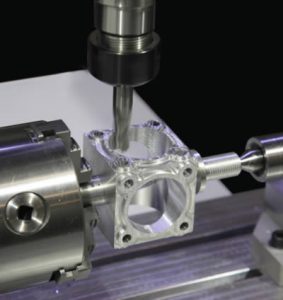
Many different metals, as well as alloys, are classified as non-ferrous. Even if you’re unfamiliar with them, you’ve probably encountered non-ferrous metals before. They are used in countless consumer and commercial applications. What are non-ferrous metals exactly?
Overview of Non-Ferrous Metals
Non-ferrous metals are those that don’t contain iron. This is in stark contrast to ferrous metals, which do contain iron. The term “ferrous” is derived from the Latin word “ferrum,” which means iron. Therefore, non-ferrous metals are metals — either pure metals or alloys — that are devoid of iron.
Types of Non-Ferrous Metals
One of the most common types of non-ferrous metals is aluminum. Aluminum is actually the single-most abundant metal in the Earth’s crust. There’s more aluminum in the Earth’s crust than any other metal. Aluminum is a pure meta that doesn’t contain iron. As a result, it’s classified as a non-ferrous metal.
Copper is also considered a non-ferrous metal. Like aluminum, copper is commonly found in the Earth’s crust. It’s not quite as abundant as aluminum, but there’s still a large supply of copper in the Earth’s crust. Research shows that the concentration of copper in the Earth’s crust is about 67 parts per million (PPM), making it relatively common. Copper is a pure metal that’s devoid of iron, so it’s considered a non-ferrous metal.
In addition to aluminum and copper, other non-ferrous metals include lead, tin and zinc. Ferrous metals, on the other hand, consist of iron and iron-based alloys, including stainless steel, carbon steel and cast iron.
Properties of Non-Ferrous Metals
Without iron, non-ferrous metals have several unique properties. For starters, they don’t rust. Rust is the result of oxidation with iron. When exposed to oxygen — whether it’s from moisture or air — iron undergoes a chemical reaction that causes it to rust. There is no iron in non-ferrous metals, so rust isn’t a concern.
Non-ferrous metals also exhibit excellent conductivity. They are both electrically and thermally conductive. Electricity and heat can easily travel through non-ferrous metals. You’ll often find electrical wires and data cables made of non-ferrous metals for this reason.
It’s also worth noting that non-ferrous metals are strong. Many of them, in fact, are stronger than ferrous metals. Non-ferrous metals are known for their superior tensile strength. With that said, most non-ferrous metals are still easy to work with. They can be cut, shaped or otherwise manipulated for use in manufacturing applications.
